In the heart of the Alentejo, surrounded by fields of ancient olive groves, cork trees, and almonds lies Portugal’s pottery village: São Pedro do Corval. This blink-and-you’ll-miss-it Portuguese village has made a name for itself as the largest pottery centre in the Iberian Peninsula. Across a handful of streets you’ll find almost two dozen pottery houses, each working with terracotta clay to produce traditional Portuguese ceramics.
Officially there are 21 ceramic workshops in the town. All are small scale, family-run pottery houses and, from what I can see, all work with terracotta clay. When you step inside any doorway that says “olaria”, which means pottery workshop, you’ll often find both a workshop and retail store in the one space. Here men covered in red dirt spin the rich, red terracotta clay into plates, jugs and cups on the wheel. Nearby steady-handed painters add colourful traditional scenes or modern designs to the pieces.
Contents
ToggleHow to find the best workshops the Portuguese pottery village of Corval
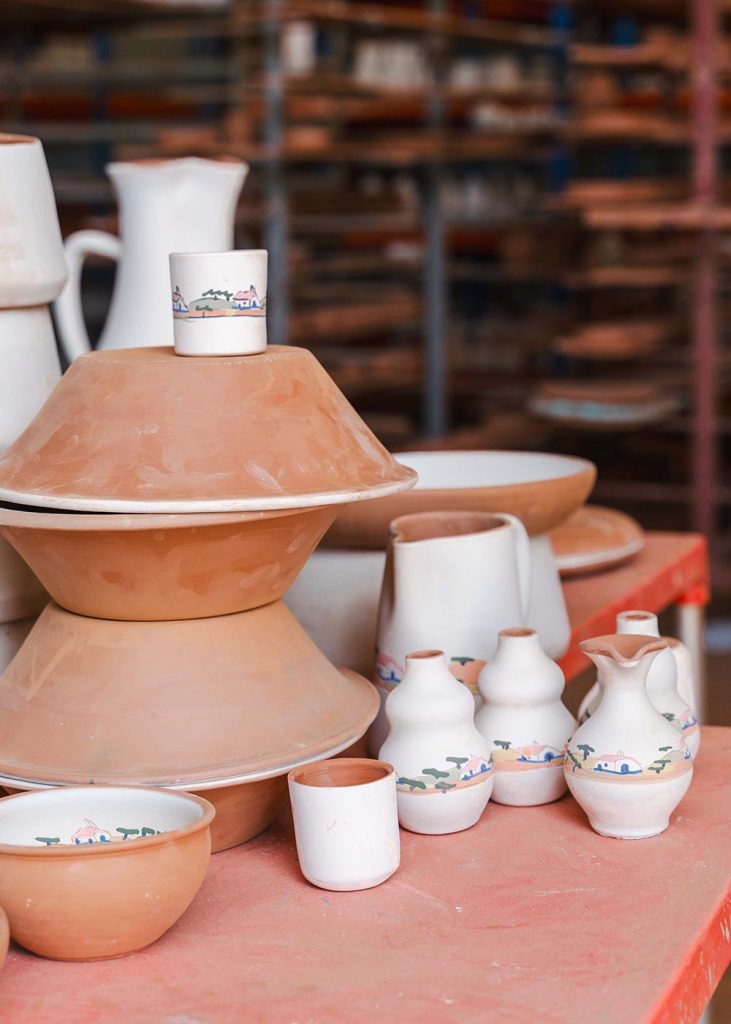

My top tip for visiting Corval is to start at the Casa do Barro. This is a tiny museum (of sorts) shares some history about pottery and this village – a story that stretches back to the Romans. But the main reason to visit is that here you’ll find the work of all the olarias in town.
I suggest starting here to see a sample of the style of each potter’s work. Some are creating more modern and minimalist designs, while others continue the tradition of painting rural scenes of life on an Alentejo farm. Depending on your personal aesthetics and tastes, you’ll find favourites in here. Visiting 21 workshops is too much – so write down the names of those that appeal to you and then seek out their addresses.
➼ Wish someone could shortcut your Portugal research? ➼ Talk to me – I offer 1:1 video calls to help cut through the noise and plan your perfect Portugal itinerary. Find out more here.
Read next… Where to shop for Portuguese ceramics
My favourite artisans and pottery workshops in Corval
Rui Patalim
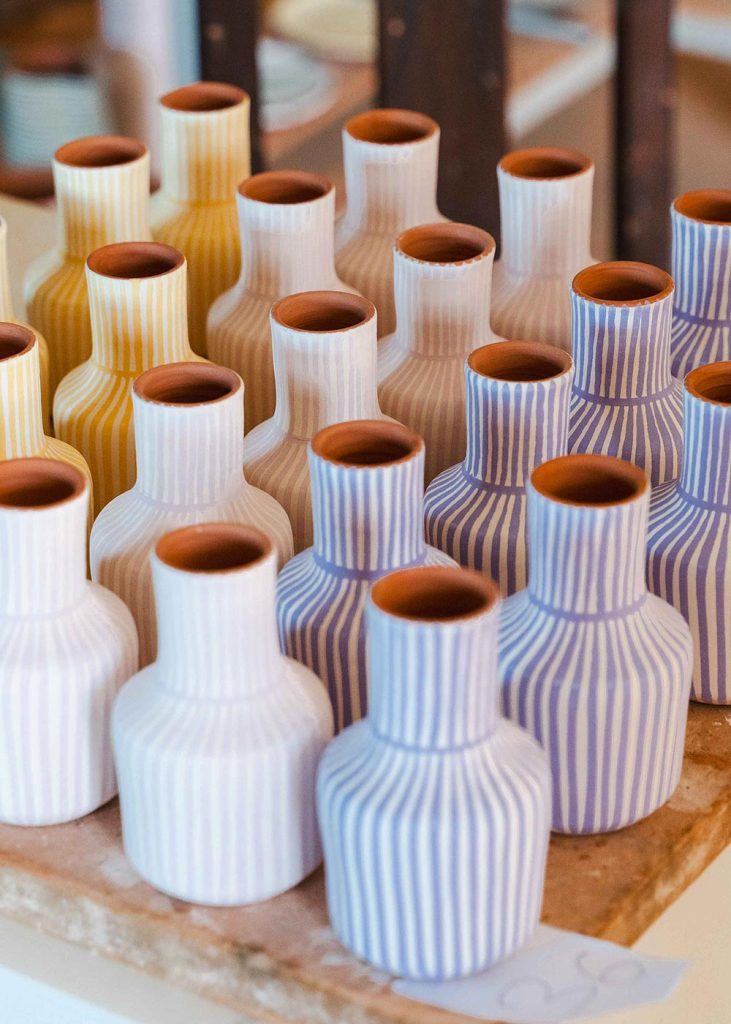
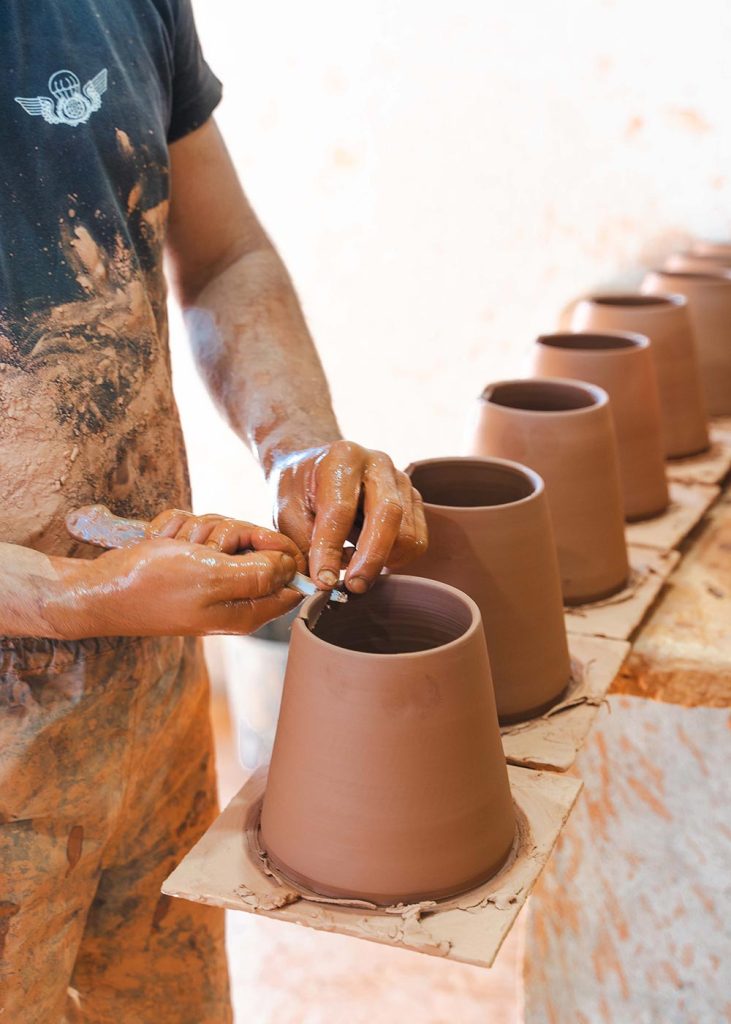
Rui Santos is the youngest of the master potters from São Pedro do Corval. He continues a tradition that stretches back to his great-great-grandfather, who opened this workshop in 1856. Now instead of painting traditional Alentejo landscapes on his terracotta plates, jugs, and vases, they are instead decorated with repetitive modern patterns. While it might seem like a shame to see the oldest pottery house turn its back on tradition, this partnership with a Canadian brand called Casa Cubista has helped revive the artform.


I’ve visited Rui twice – three years apart – and in that time he’s built a massive warehouse out the back, and I could see that one painter’s table had become four tables. It seems his sons don’t have an interest in the craft, but he’s working with his younger nephew Bartolomeu, who I saw throwing half a dozen terracotta jugs on my last visit.
There’s a fantastic interview with Rui here, just use Google Translate to read it.
Olaria O Patalim
O Patalim is the oldest workshops in Corval, and Rui shares a wall with his sister Nélia, a painter who also produces terracotta cups, mugs, bowls and more with more feminine modern patterns. While being separate workshops, they share the same property so I always visit both and often find I buy more gifts for friends and family at Nélia as she produces more mugs and petite jugs.


Olaria Tavares
Now in his 70s, master potter Joaquim Tavares has more than 50 years experience behind the wheel. But this Corval native only dedicates himself to the wheel so his daughter has pieces to paint. His other interest is the healing power of plants.
Address: Rua dos Castelhanos 10
Olaria José Cartaxo
The large workshop of José Cartaxo displays more traditional Alentejo pottery. Expect to find vases, plates, and Portuguese ceramics of all shapes with colourful flowers and typical Alentejo motifs, such as shepherds, harvests, pigs, and mountains.
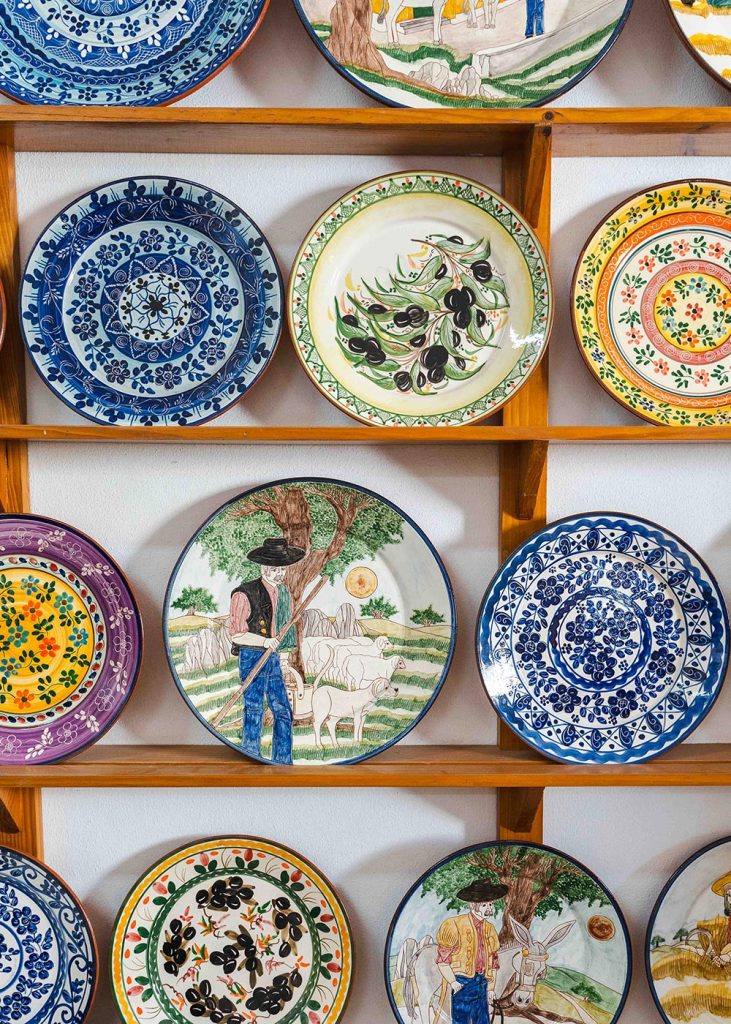
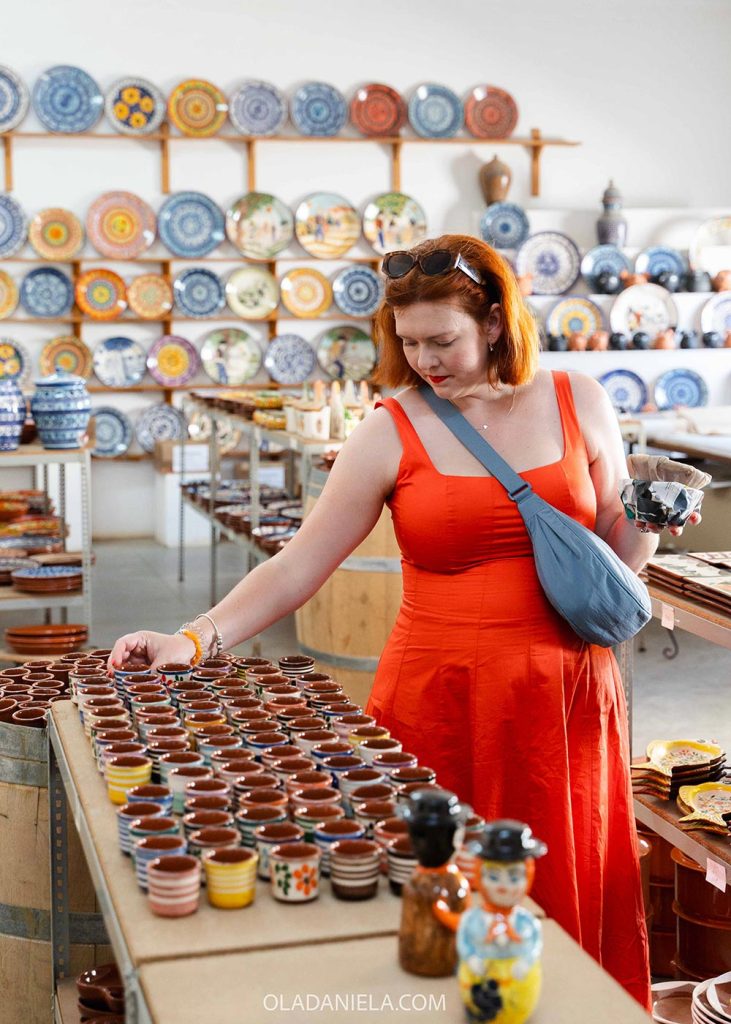
Address: Rua da Primavera 23
There’s also Olaria Joaquim Lagareiro, Olaria Polido & Filho, Olaria Bulhão and many more. As I said, drop by the Casa do Barro to see work from all the pottery houses then decide where to visit.
How to get to Corval, Alentejo, from Lisbon and Évora
From Lisbon it takes around two hours in a car to drive to São Pedro do Corval. The journey skirts the edge of Évora, the capital of the Alentejo, so it makes sense to stop on the way there or back, or the small city makes a great base for exploring this part of the Alentejo region.
If you don’t want to hire a car, you could take a train from Lisbon to Évora. Then you’ll need to ride the bus to Regengos do Monsaraz and take a 10-minute taxi to Corval. This small village is not the easiest place to reach by public transport! You could also hire a car in Évora and make the 45-minute drive to Corval.
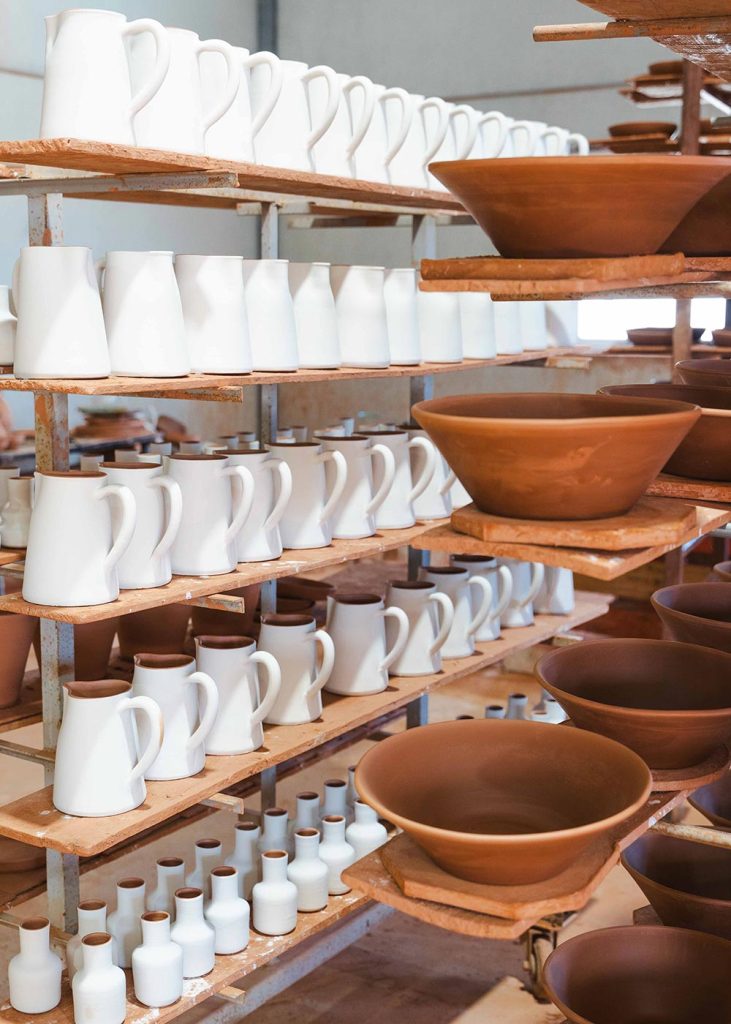
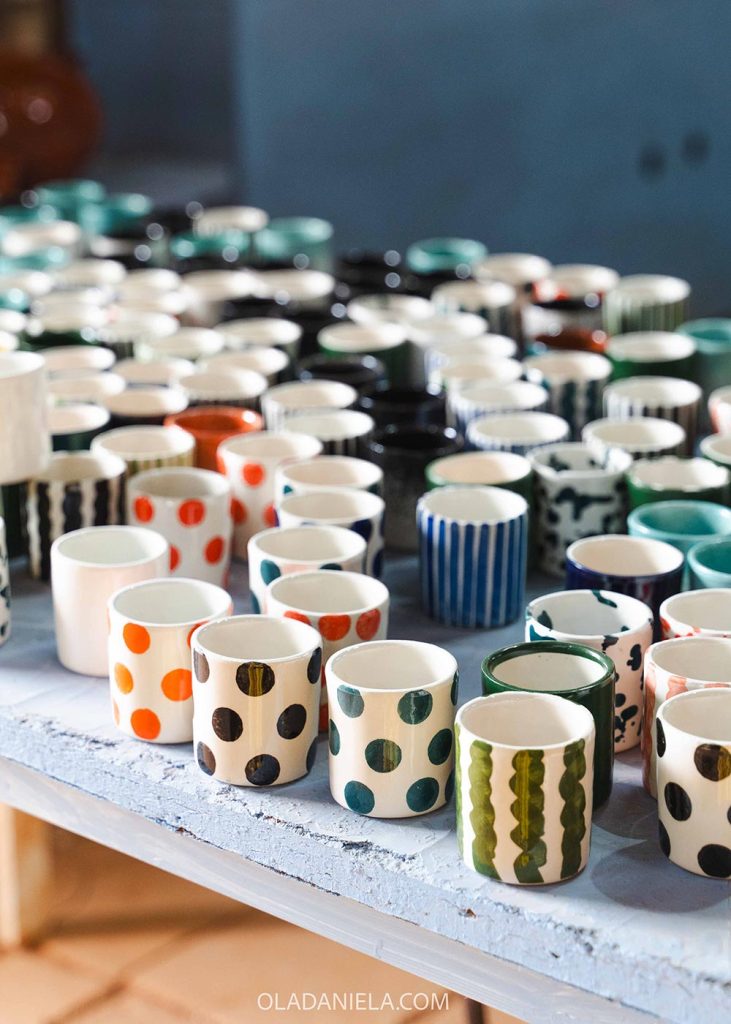
Read next… Guide to the Alentejo
What else can you do in Corval
Apparently the village of Corval has a pigeon racing league, philharmonic orchestra, choir, and a daily radio station, Radio Corval. But as an outsider visiting you probably won’t cross over with those activities.
What you can do is visit Alqueva Lake Gin for a tasting. Corval native, Marcelo Pinto, is in his 30s and started this gin brand with his wife. You can drop by to taste the local gin, infused with Alentejo botanicals.
There’s also Cerveja duMato, a craft beer label run by an older gentleman from Sintra, who quit life in banking to move to the countryside. Ask for his beer at a local cafe or restaurant.
Speaking of food, for a bite to eat you could drop by Adega do Cachete for lunch, or one of the handful of snack bars. It always surprises me how many cafe bars or restaurants a small village can support!
And beyond pottery, there’s one other artisan I’d like to highlight. I’m also a fan of the clay Alentejo figures that Sandra Pinto creates under her label D’Evora com Amor.
1-day Alentejo itinerary, including Corval
If I had one day to explore Corval and this area of the Alentejo, here’s what I would do.
Morning: Explore Corval pottery
I’d wake up in Évora, Regengos do Monsaraz or Corval, then use my morning to explore the various olarias. Since they are family businesses, many will close for lunch for two hours.

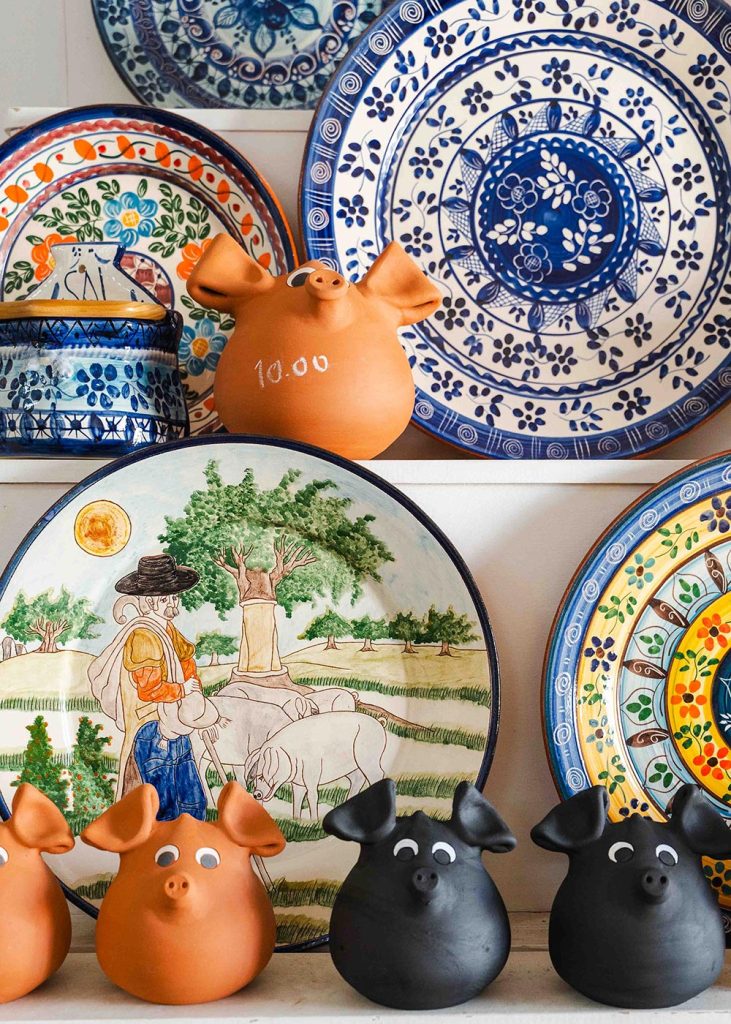
Lunch: Feast on Alentejo cuisine
There are some great restaurants hidden in small villages around here. Try Sem-Fim or Taberna Al-Andaluz.
Afternoon: Go wine tasting, explore prehistoric sites & visit Monsaraz
You’ll drive past plenty of vine-covered hills on the drive from Évora to Corval. In the afternoon you could go wine tasting, or seek out prehistoric monuments such as the Anta do Olival da Pega – believed to have been built between 3500 and 3000 BC.
Later I’d venture up to Monsaraz, one of the most beautiful villages in Portugal. This hilltop walled medieval village overlooks Alentejo plains and Alqueva Lake. Wander it’s four streets, popping into little artisan boutiques, before taking to the castle for sunset.
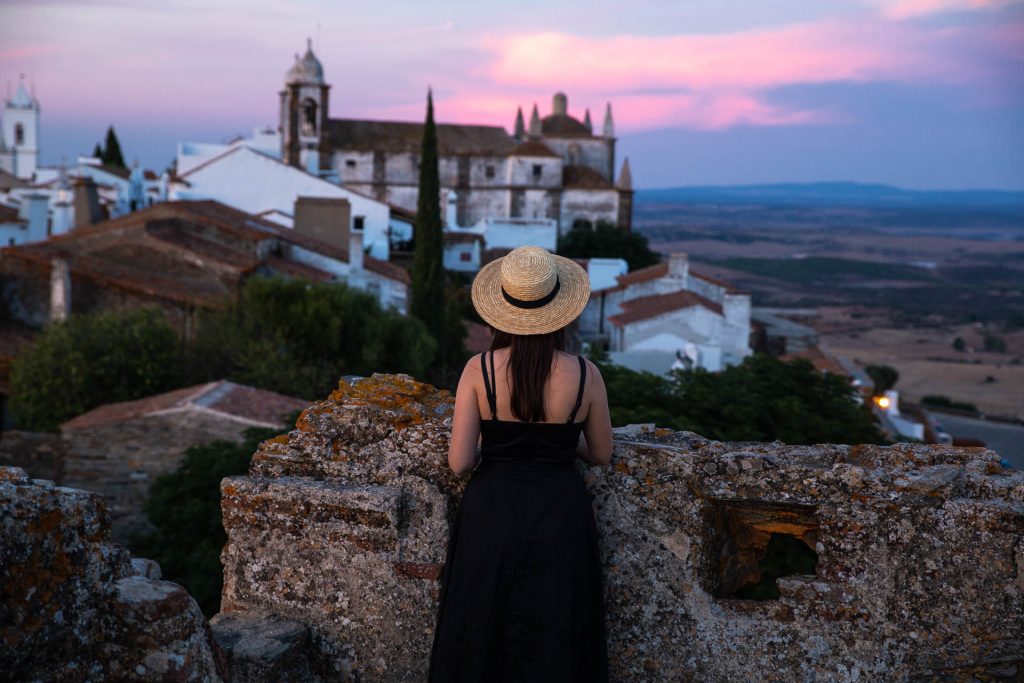
Read more… 48 hours in Monsaraz
Dinner: Monsaraz
Sunset in Monsaraz is magical. Make sure you book somewhere in the village for dinner. You could try Sabores do Monsaraz, Sahida, Taverna Os Templários or Xarez for a terrace with views.
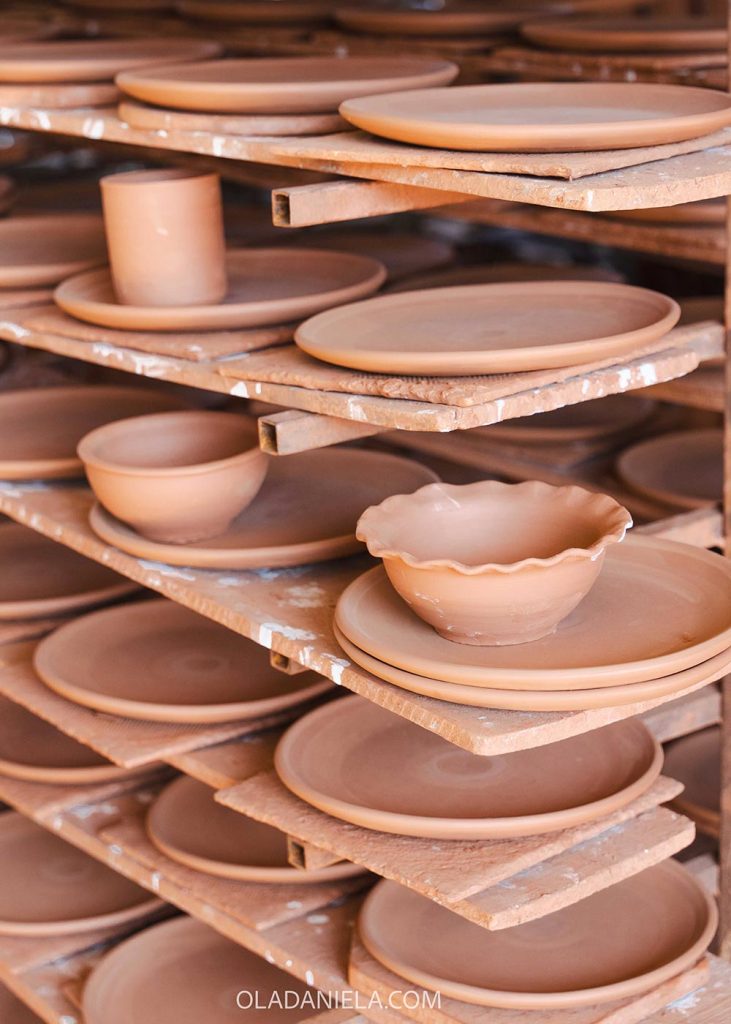

Where to stay in Corval
There are more than a dozen cute guesthouses and places to stay in São Pedro do Corval or nearby villages. Quaint little spots like the top-rated Villa Oliva São Pedro and Casas da Olaria have a pool and will land you right in the heart of the village.
Find more places to stay in Corval here.
Otherwise I would stay in Monsaraz, the magnificent medieval village atop the hill. Casa Dona Antonia is a renovated bed and breakfast with a pool, garden and views. Casa D’ Santiago is another top-rated guesthouse. Or A Janela Do Castelo is a whole house with amazing castle views.
Find more places to stay in Monsaraz here.
Read next… 18 best places to visit in the Alentejo: prettiest villages, towns and cities
Pin this post!



Keep reading…
- Where to shop for Portuguese ceramics
- Portuguese artisans: 10 traditional crafts from the Alentejo
- Where to shop for tiles (azulejos) in Portugal
- 48 hours in Monsaraz
- 48 hours in Évora
- Bottomless wine and secret cellars: Redondo’s tasca and talha trail
- Explore Redondo, Portugal’s best-kept pottery secret
- 20 best things to do in Évora, the Alentejo capital
- The best tile painting workshops in Lisbon, Porto and the Algarve
- Portugal Road Trip: Where to stop between Lisbon and Lagos, Algarve



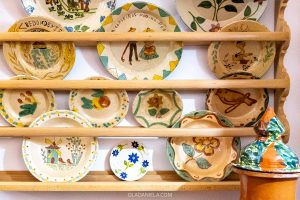
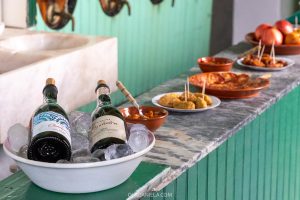

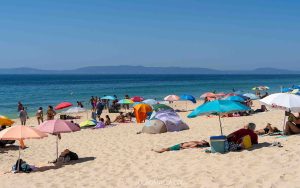
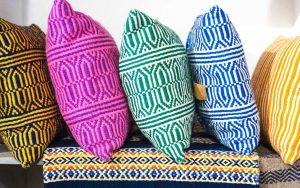
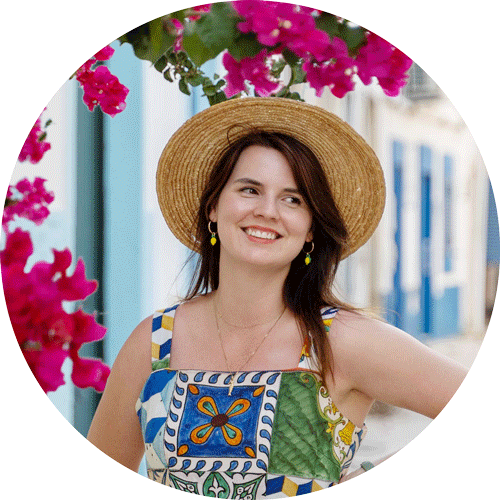



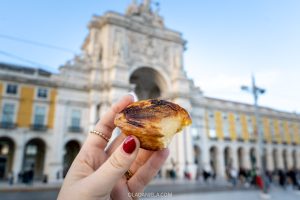
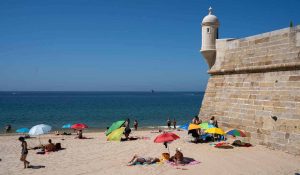
6 Responses
Thank you, Daniela, for such a helpful post! My wife and I are in Porto right now, and we’re planning to spend a morning in Corval on Tuesday (May 27). Your post is really informative and helps us feel confident in making the most of the time — especially since we’re traveling with young children.
Question for you: are the various pottery houses equipped to ship anything we purchase back to the United Stated? Based on our travels elsewhere, most places like this commonly and easily ship the products for you so you don’t have to pack them, but we aren’t sure if Corval is similar or different because it’s a smaller town.
Any thoughts or advice?
Thanks,
Jeff
Hi Jeff! So happy to hear you’ve been enjoying my site 🙂 And good question – most of the makers in Corval are very small so it is unlikely they will ship to the USA. The largest maker there is Rui Patalim, who produces for the Casa Cubista brand (Which you can shop in the USA) but I don’t think they ship either. I would suggest either visiting CTT (Portuguese post office) and shipping them yourselves (may be tricky to manage – definitely go to a city branch for English), or if you have a hotel concierge they may have some options.
To avoid breakages, I’d suggest mailing some clothes or other items home to make space in your carry-on bag for ceramics.
Hope that helps!
All the best,
Daniela
Hello Daniela
Thank you for this helpful and informative article
Could you please tell me if these artisans accept credit card payments or should we carry cash
Thank you
Hi Dominique, DEFINITELY carry cash! I have had to rush up to the town’s only ATM in the main square before! If any accept card, it will likely only be Portuguese cards not international too.
This has been so helpful ! Could you let me know when are the best hours to go visit the town? Before or after lunch ? As I understand , they close for 2hrs during lunch time .
Olá Melissa! Yes, most will close at lunch. I’d suggest going between 9am-1pm or 2.30/3pm-6pm. A few “olarias” shut around 5pm, but others say they will stay open until 7pm. Hope that helps! I’ve usually popped in after lunch on the way to Monsaraz village 🙂